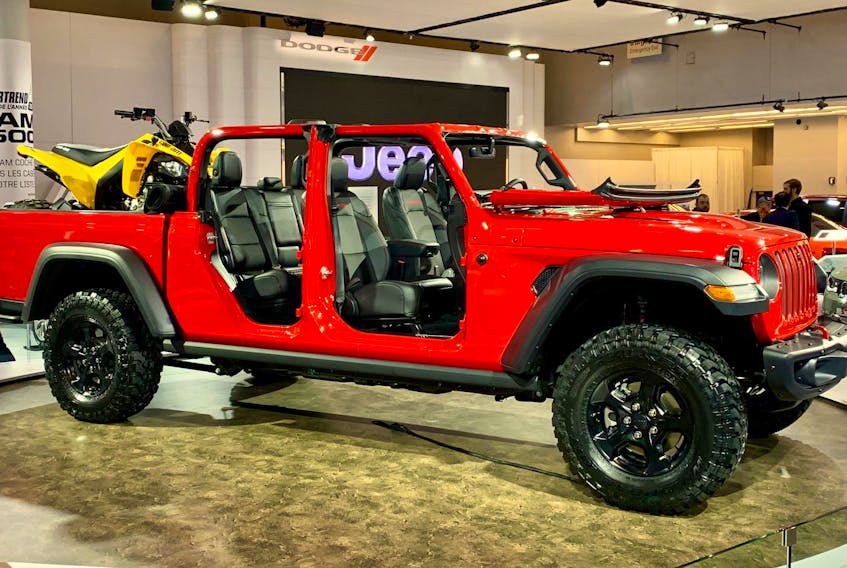Another year, another auto show season.
Even after 20 years, I get excited, anticipating the grand reveals, the showmanship. It’s not my wedding anniversary. This marks 20 years of being involved in the auto industry that showcases its products at annual auto shows around the globe.
Auto shows, seven- to 10-day affairs, feature a press day ahead of opening to the public. On media day, manufacturers, on their best behaviour, present their upcoming and newest wares in 20-minute press conferences on a guided route.
I’m lucky to be part of this dynamic industry that’s about the economy, ethics, aesthetics and envisioning the future of mobility and transportation. Auto shows allow the manufacturers to express their vision to the media and the public.
The Frankfurt Motor Show kicks off the season in September. Paris in the fall? Take in the motor show there in October. The Los Angeles Auto Show in November has been picking up steam.
Some say it will eventually eclipse the North American International Auto Show in Detroit which took place in January this year for the last time. In 2020, that Granddaddy of auto shows will now happen in June.
In Detroit, a.k.a. Motor City, and across the globe, changes are afoot in the world of all things wheeled and mobile.
This was apparent as I perused the brief list of press conferences for the Montreal International Auto Show, one of my favourites for its concise layout and feeling of family.
Much has changed over 20 years. More so over the 119 years auto shows have been thrilling car nuts and tech nerds. The auto show officially debuted in 1900 in New York City.
The seven-day ‘horseless horse show’ featured 66 exhibitors had 160 vehicles on display. The show drew 48,000 people and included demonstrations of braking, acceleration and even a special ramp to showcase various vehicles’ hill-climbing proficiency.
Perhaps a harbinger of things to come, the least popular models were gasoline-powered as the internal combustion engine was considered primitive and noisy.
The models that excited New Yorkers most were powered by electricity and steam. The cleanliness of these vehicles was in direct contrast to the estimated 450,000 tons of horse manure, 21 million gallons of urine, and 15,000 horse carcasses removed from the city’s streets each year (Source: American Oil and Gas Historical Society).
Fast forward to 2019. The Montreal Auto Show boasts almost 200,000 visitors a year. This year there are 500 cars on exhibit including two North American premieres, the 2020 Genesis G90 and Kia’s Forte5, and 33 Canadian premieres, down slightly from last year.
What I love about an auto show is the feeling that one is gazing into a crystal ball. The Generator, a new feature this year, is all to do with urban electric mobility and lessening the industry’s carbon footprint. The show features no less than 42 models showcasing various propulsion systems including all-electric, hybrid, plug-in hybrid and hydrogen. For the past six years, show-goers have been able to take a test-drive in a variety of electric vehicles.
The auto industry must remain relevant to new generations that will likely not have as strong an emotional connection to vehicles and the desire to own one.
The first press conference in Montreal demonstrates there is still plenty of passion in the design and execution of an automobile. Mitsubishi revealed their striking technical all-electric prototype, the e-Evolution concept, firmly establishing the company’s drive toward electric mobility.
The on-fire brand’s Outlander PHEV set an industry record for plug-in hybrids by selling more than 5,000 plug-in hybrids in a calendar year, almost half of those Canadian sales in the province of Québec.
Québec has had an enduring love affair with alternate-powered vehicles and wedding bells were ringing when an historic collaboration was announced at the Montreal Auto Show.
In partnership with Harnois Energies and Hydrogenics, the Government of Québec and Natural Resources Canada, Toyota Canada, and now Honda Canada, are helping to build the hydrogen fueling infrastructure for hydrogen fuel cell vehicles.
In Québec City, the first multi-fuel station is set to begin operation in February, with an on-site electolyzer that will turn the province’s abundant hydroelectricity into clean, sustainable hydrogen, putting Quebec on the map as a world leader in the production of hydrogen. Honda Canada will be providing investment support for a Montreal station.
The move away from carbon-based fuels is not just about vehicle emissions. The process of manufacturing vehicles is being addressed by auto companies. Porsche, for example, has pledged their upcoming all-electric Taycan EV will be not just green, but neon green.
Aluminium panels coated in titanium oxide affixed to the exterior of the factory where the Taycan is being built, when activated by sunlight, will break down and remove the nitrogen oxide and other pollutants from the air, resulting in a carbon-neutral vehicle from a zero-impact facility.
A desire for extravagant, sexy sports cars with jaw-dropping horsepower obviously still revs the public up. Proof: Montreal Auto Show’s buzz-worthy new-for-2019 exhibit, the Black Box, and the three vehicles featured in it.
The $5,000,000 Bugatti Chiron, with its mid-mounted, 8.0-litre, quad-turbo, 16-cylinder 1500-horsepower engine, accelerates from 0 to 100 km/h in 2.4 seconds. No horse manure there.
At half the price, the Koenigsegg Agera RS, which holds the top speed world record (457.94 km/h) for a production car, might be worth considering. How about the FELINO cB7R? Built in Quebec, the lightweight 700-horsepower supercar accelerates from 0 to 100 km/h in 2.9 seconds.
A more down-to-earth highlight of the show for me was the reveal of the 2020 Jeep Gladiator. Is it a truck? A jeep? It’s both and available with a six-speed manual transmission. That alone gets my vote.
Ah, auto show season. I can’t think of anything more romantic than spending Valentine’s Day in Toronto at Media Day for the Canadian International Auto Show. That show opens to the public on Feb. 15. Come fall in love.
Follow Lisa on Instagram: @FrontLady









